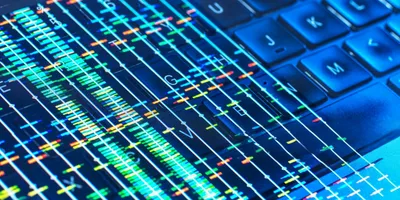Recycling takes place in our cells at all times: in a process called autophagy, cell components that are no longer needed are enclosed by membranes and broken down into their basic building blocks. This vital process prevents the formation of harmful aggregates and makes nutrients available again.
A research team co-led by Prof. Dr. Claudine Kraft from the CIBSS Cluster of Excellence at the University of Freiburg and Dr. Florian Wilfling from the Max Planck Institute of Biophysics in Frankfurt has now discovered the conditions necessary for autophagy to start. They were also able to artificially create these conditions and thus trigger the degradation of otherwise non-degradable molecules in yeast cells. Targeting autophagy in this way is a promising approach for promoting the degradation of aggregates that can otherwise form plaques in neurodegenerative diseases such as Alzheimer's, as well as to improve the efficacy of cancer treatments. The study has been published in the scientific journal Nature Cell Biology.
Weak molecular interactions essential for autophagy to begin
In order for the degradation of cellular components through autophagy to occur, they must first be recognised as waste. This is done by receptor and other adapter molecules. However, it was previously unknown how exactly these molecules trigger the subsequent steps. "We have now been able to show that the receptors must bind weakly to the material to be disposed of for autophagy to start," explains Kraft. "If they bind too strongly, the process is not triggered."
What initially sounds counterintuitive could be explained by the researchers with the help of computer simulations and experiments on living yeast cells and human cells in cell culture: the weak binding causes the receptors to remain mobile and form random clusters. "When the point of critical concentration has been reached, phase separation occurs: the adapter molecules come together and form a droplet, similar to oil in water," explains Wilfling. "Such a liquid accumulation has different physical properties than the individual molecules serving as a flexible platform for all other molecules involved in autophagy."
The process can be controlled artificially
To test their hypothesis, the researchers introduced virus particles into yeast cells that the cells are normally unable to break down. By modifying the virus particles so that autophagy receptors could weakly bind to them, the researchers were able to trigger the degradation of the viral protein. However, if they modified the surface so that the receptors bound strongly to it, no degradation took place. "This result is promising because it shows that we can specifically intervene in the autophagy of cargo molecules of living cells," summarise both Kraft and Wilfling.
The study was funded by the German Research Foundation (EXC-2189; SFB 1381; SFB 1177; 450216812; 409673687; GRK 2606;) by the European Research Council under the Horizon 2020 programme (ERC 769065), the Max Planck Society and by the European Union (ERC 101041982).
-Note: This news release was originally published by the University of Freiburg. As it has been republished, it may deviate from our style guide.











